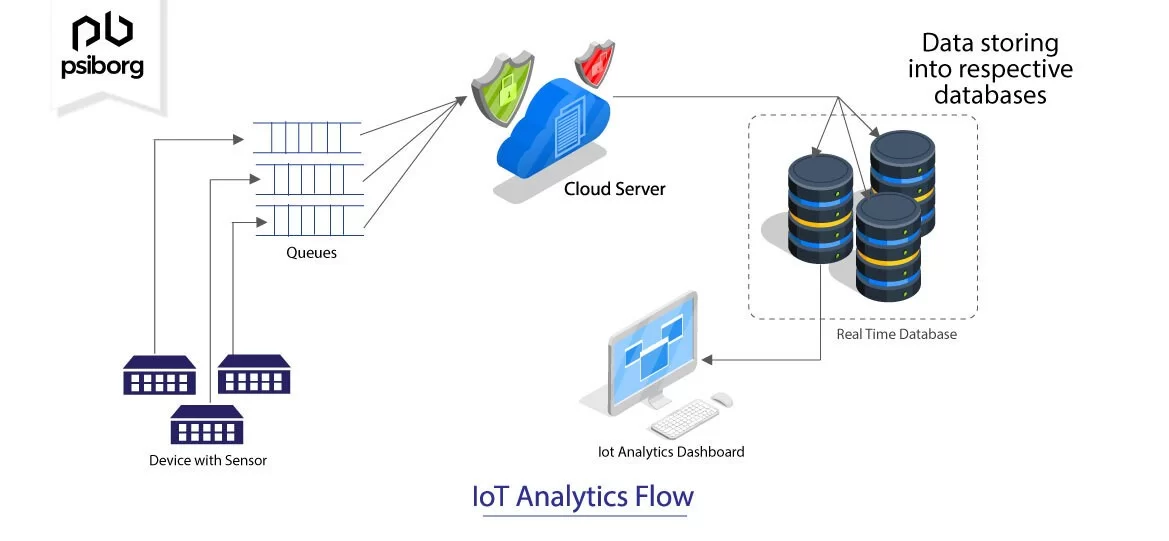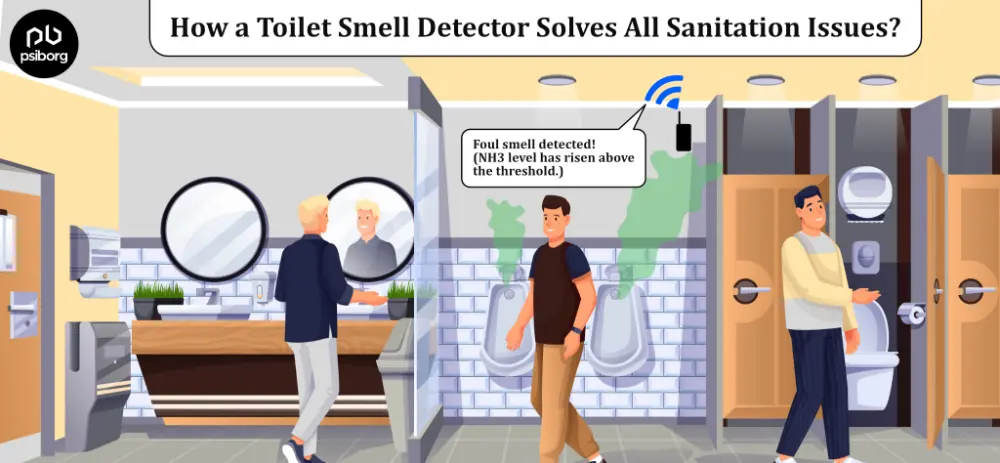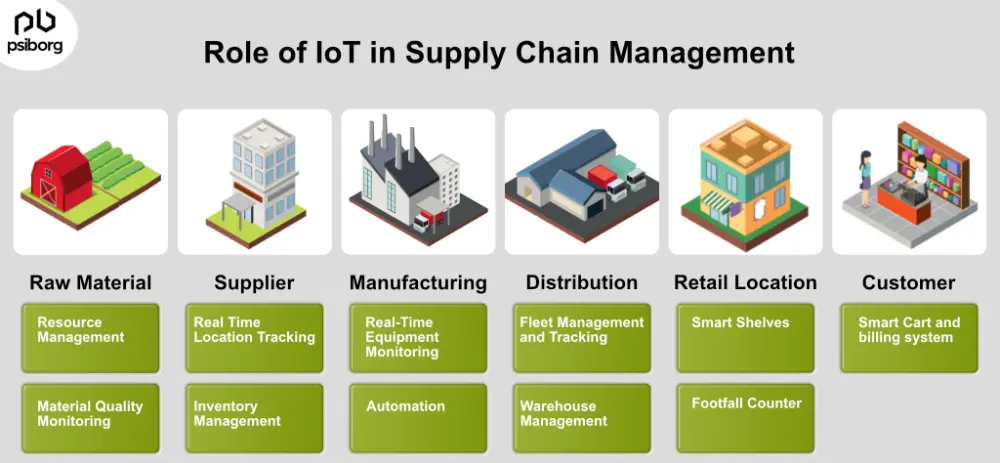The digital world has opened doors for accessing data from anywhere to everywhere. Right after we start surfing for a website or a keyword, we start producing data. From a smart tracker to confidential information stored in the saved drives, every bit combines together to form big data. Here comes the role of sensor data visualization in IoT dashboards.
However, have you ever thought about what happens to this data? All this data is analyzed to serve different purposes or to study customer requirements, trends, and future needs. IoT monitoring dashboard is a smart way to showcase remote IoT visualize data online in the form of graphs and other visuals so that it becomes easy to understand for humans. In the same way, IoT visualization works.
Data analysis and data visualization play a huge role in an IoT Dashboard. An IoT dashboard can also be referred to as an IoT web app or an IoT control panel or an IoT data visualization tool as its primary purpose is to collect data from different smart devices in real time and convert it into human-readable information. There are various IoT cloud platforms, which offer many features, from fetching and storage of data to analyze. IoT platforms and IoT dashboards are used interchangeably sometimes, but they are not the same.
Let’s understand sensor data visualization in IoT dashboard and data analysis along with other IoT control panel elements in detail.
SENSOR DATA VISUALIZATION IN IOT DASHBOARD AND IT’S COMPONENTS
IoT Dashboard or IoT control panel, as the name suggests, is a web or mobile application that is used to control smart devices along with displaying the data generated by these smart devices. From smart home automation to Fleet management systems, everything needs an IoT control panel to operate. Along with data representation and visualization in IoT, a well designed and developed IoT device control panel requires the following elements:
- Real-time data collection
- Data representation
- Analysis of IoT sensor data
- Data management
- Sensor Data Visualization
- Storage of IoT sensor data
- Security of generated data
1). REAL-TIME DATA COLLECTION
The main objective of an IoT monitoring dashboard is to provide real-time sensor data visualization in the form of an IoT data chart so that damage can be avoided. Imagine if an IoT dashboard providing a weather forecast is giving the correct information, but after the weather conditions change. The data collected is of no use after the time of occurrence passes.
Therefore, a dashboard must display both historical as well as real-time data.

Real-time data is referred to as information displayed on the IoT web app screen with low latency. The image shows the screen of an automobile dashboard displaying the live location through GPS tracking.
2). DATA REPRESENTATION IN IOT DASHBOARD
We are living in a technological era where everything is connected with each other via the Internet. However, the Internet is packed with data files, including images, text, statistics, etc. The question that arises here is which data is important and which data is trash. This is done by analyzing data and categorizing it as information and data. In simple terms, we can say that remote IoT data analytics and visualization is the process of analyzing raw data and extracting useful information from it.
IoT devices are developed using sensors, and there are different sensors for different parameters. For instance, a proximity sensor will sense the distance between two objects, and a temperature sensor will sense the level of heat or cold in the surroundings to detect temperature. All this data is stored in the cloud storage of the device. The IoT control panel analyses the essential data and transmits it to data visuals or IoT data charts.
3). IOT ANALYSIS FLOW
We are aware of IoT analysis now, but how does it work? The flow of IoT analysis is easy to understand with the flow diagram below:

By now, a question arises how does sensor data go from device to cloud?
4). CLOUD INTEGRATION WITH IOT DEVICES
IoT Gateway devices sit at the intersection of the cloud and IoT device nodes or sensor devices. IoT gateway sends edge-computed data to the cloud for further analysis and storage. The data collected from wireless sensor networks or other IoT devices will be transmitted through gateways to the cloud. The received data is then stored in the cloud. IoT data analytics continuously analyzes the data and sorts it by putting it into respective databases. The IoT analysis dashboard monitor IoT data from the database and starts making visuals. The data displayed in the form of visuals show meaningful information to understand without getting confused with the values. This data can be viewed on mobile phones, laptops, or tablets.
5). DATA MANAGEMENT
Data management or organization is another element of a successful IoT dashboard. A dashboard is entirely functional to synchronize data from the database created in the cloud and convert it into human-readable visuals. But how will the user understand which data is relevant and which is not? Here comes the part which is played by the data organization functionality. An IoT control panel should be able to sort data according to the parameters and values. The user should be able to emphasize, resize, or export the data displayed on the web app according to his requirements.
Emphasizing the data refers to highlighting the essential data from a bunch of unimportant data. Let’s say if there is some critical situation that needs user attention immediately, but the dashboard is displaying the information in the usual way, then it might cause severe damage. Therefore, it is important to emphasize the data. This can be done by adding animations or highlighting the data with different colors, which can instantly catch the user’s attention.
Resizing means that the user should be able to zoom in or zoom out detailed data. Similarly, the data should be movable or exportable to different file formats so that different values can be seen, compared, and understood clearly.

The screen shown is a representation of an IoT dashboard for a soil quality monitor where the user can click on the particular dot on the land map. Whenever the user clicks on the map, the area zooms out, showing different parameter values for the specific region.
6). SENSOR DATA VISUALIZATION IN IOT DASHBOARD
Data visualization is a term used to describe the most essential feature of an IoT Dashboard, that is, IoT sensor data collection. An image is much more precise than words. This means that we grab the concept better if it is visually appealing rather than textual information. According to several physiological research, the human brain can understand and remember pictorial data quickly. In simple words, data visualization is the art of visualizing information in the form of visuals such as graphs, pictograms, bar charts, pie charts, etc. There are various IoT data visualization tools integrated with the dashboard which maps the data in pictorial formats. Now, let’s understand how data visualization is useful in the IoT Dashboard.
The IoT dashboard is a medium to represent the data collected by the IoT device. However, the data collected is vast in numbers. Therefore, all the data collected must be shown in visuals so that it can be easily understandable by the user. In other words, IoT data visualization is a way of presenting the raw data in a more coherent form. The dashboard takes the analyzed data and creates its visuals in an organized format.
Data visualization processes automate the entire process of data analysis and decision-making for better device performance. It also helps with a better business strategy. Each data visual represents a particular parameter or objective. To conclude everything, data visualization understands the large amount of data collected by different sensors and transmits the data into meaningful visuals.
DATA VISUALS IN AN IOT DASHBOARD
Different techniques and tools are used to create these remote IoT cloud charts and data visuals. Below are some of the data visualization types-
- Graphs
- Histograms
- Pictogram
- Bar graph
- Heat Maps
- Gauges
- Statistics
- Line graphs
- Location maps
- Infographics
- Tables
- Bubble cloud
- Graphical shapes
- Timeline
- Scatter plot
PARAMETERS REPRESENTED BY DATA VISUALISATION
IoT dashboards display the data collected by the sensors integrated into an IoT device. The following parameters can be visualized in an IoT Dashboard.
- Weather conditions
- Temperature
- Moisture level
- pH value
- Humidity
- Proximity
- Location
- Chemical level
- Current or voltage
- Level of different elements
- Pressure
- Quality of different surroundings
- Toxicity in air or water
- Motion
The IoT web app screen represents different parameters such as temperature, humidity, light sensitivity, pH value, water level, and moisture level for an agricultural field.
7). STORAGE OF IOT DATA
An IoT device generates tons of data every second. Let’s say if a device is being used for getting weather information in real-time, then it will generate data for every change which is happening in the environment and this will constitute a lot of data over a period of time.
Smart devices are designed by integrating sensors that cannot store this amount of data. Therefore, all this data is stored in cloud storage. Let’s understand how information is stored in the IoT web app.
The data generated from IoT devices is analyzed with respect to time. The timestamp data is processed and this data is pushed to the IoT devices’ cloud storage, forming a database. The IoT Dashboard reads the data from the database and creates data visuals for the user.
The IoT Dashboard is said to be useful only if it can load data efficiently and create visuals from the database. Some IoT web apps or Mobile apps provide users with an optimized experience by coupling the data (which is collected through remotely distributed smart devices) with its own database. Other control panels are designed to work with generic databases.

The above-displayed dashboard is associated with a soil quality monitor, displaying a history of moisture level so that whenever the moisture level increases or decreases, it can visualize the values from the device database.
USE CASES OF SENSOR DATA VISUALIZATION IN IOT DASHBOARD
The above information is useful for building a successful IoT dashboard. Let’s understand more by the real-life examples of such IoT web apps.
1). IOT CONTROL PANEL FOR MULTIPLE DEVICES
An IoT control panel can display data of different devices that are integrated into it. A home security system dashboard will display the security status for different devices installed in the house. These devices are installed floor-wise, on the main gate, garden area, etc. containing different sensors. The dashboard of home security displays real-time information regarding security for all devices. Each device sensor node sends data that is stored and analyzed separately. The user can click on a particular location to check data for that location.
2). ELECTRICITY CONSUMPTION MONITORING
Electricity consumption monitoring can be installed in factories, multistorey buildings, or offices to know each floor’s power consumption. The dashboard will show power failure, short-circuit, wiring issues, etc. In real-time. The system saves time and damage caused by power cuts in factories or buildings where every operation is dependent on machinery.
3). BUSINESS PRODUCTIVITY MANAGEMENT
An effective dashboard is useful in making successful predictions. The production graph of the company’s different departments can be displayed on the dashboard, which can be used to predict the measures to increase the departments’ productivity. This can help with business growth as well as in increasing revenue.
4). PARKING MANAGEMENT SYSTEM
Car parking is a big problem nowadays as there are lots of cars but limited parking spaces. An IoT-based car parking management system with the dashboard associated with the system sends real-time information in visuals and Graphics. The vacant space shows a green signal, whereas the occupied parking space displays a car icon. The IoT control panel for smart parking displays the car plate number so that users can quickly locate the car and save time.
5). FOR BOOKING TABLES IN A HUGE CAFE OR RESTAURANT
Restaurants filled with customers can create chaos. Sometimes because of so many customers in line, it becomes difficult to find a vacant table. The restaurant table booking system is the best way to overcome such situations. The integrated occupancy sensors help to show the vacant tables in the huge cafe. Also, it will help in predicting which table would be vacant soon so that the owner can easily make the pre-bookings for customers.
6). TRAFFIC CONTROL SYSTEM WITH SENSOR DATA VISUALIZATION IN IOT DASHBOARD
Collected and analyzed data from roadside cameras helps in monitoring the traffic. The data collected from Transportation is shown in various visual types on IoT Dashboard. Also, it helps avoid road accidents and traffic jams.
7). SPORTS AND FITNESS
IoT technology has brought about an immense change in sports. Sports have become more exciting for sportsmen as well as the audience with the influx of IoT technology. IoT in sports makes use of smart sensors to establish a seamless connection between sports players, fans/audiences, and sports venues. The analyzed data give insights into the player’s crucial health information such as level of hydration, anxiety, heat exhaustion, etc. This data is immensely useful in achieving good mental and physical health, and the safety of sportspersons.
8). ENVIRONMENTAL MONITORING
Environmental monitoring is not a short period of monitoring but one that extends over months, years, and even a lifetime sometimes. IoT-based Environmental Monitoring involves monitoring Air quality, Water quality, Landslide detection, Forest fire, etc.
9). SOLAR POWER PLANT MONITORING
Power Generation Monitoring at Solar power plants and also how it can be used efficiently along with custom alerts.
10) . CATTLE MONITORING AND MANAGEMENT
Cattle Monitoring using IoT helps farmers to keep track of their cattle in real time. It helps in combating many problems faced in the livestock industry. . With the help of the IoT Dashboard associated with the tracking device, farmers can create virtual boundaries with geofencing to secure the locations where the livestock can move freely.
Conclusion
The above article gives a detailed insight into the IoT Dashboard, and its elements. The data visualization in the IoT dashboard for IoT analysis is the element that plays the most crucial part in developing a successful IoT control panel.
A little About what we do at PsiBorg,
PsiBorg is the leading IoT development company, where we have developed many IoT systems and created the associated Best IoT dashboard with huge creativity and innovation. If you are looking for a perfect partner for designing and developing your IoT ideas, we can be your best match.






